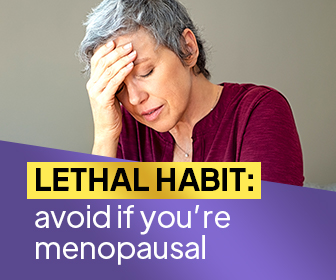Amino acids are the fundamental building blocks of our bodies. They make up the proteins of our bodies and helps it to function properly. They are absolutely vital for good health.
But, what are amino acids? Much like how there are 26 letters in the alphabet that make up millions of words, there are 20 individual amino acids that create every cell of our bodies. And, without them, we couldn’t physically exist!
Out of the 20, there are nine essential amino acids. They are essential because our bodies need them, but are unable to create them. Thus, we must get them from the foods we eat. And, when we eat proteins, we are eating amino acids.
Getting all our essential amino acids is not a difficult task. We have been doing it for millennia without even knowing it. But, now, we have real knowledge and actual amino acid definitions to guide us towards better health and living.
Keep reading to learn more. We are about to explore the world of essential and conditional amino acids, their respective functions, and how we can make sure we are getting enough of them in our daily diets.
Amino Acids Definition: What are Amino Acids?
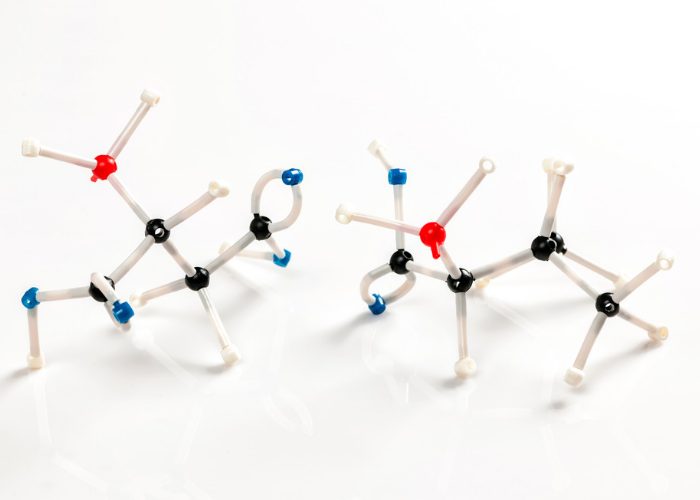
A concise amino acids definition is that they are the building blocks of almost every biological process in our bodies.[1] That means they are fundamental in the creation of our bodies – and the fact that our bodies exist is because of them. Moreover, they also help our bodies continue to function.
Our bodies use 20 different types of amino acids to create building blocks of protein.[2] Structurally, individual ones link together to form large protein molecules. Then, they link together again to form long-chain amino acids, which form protein cells. And, then in one final move, they branch out yet further to form branch-chained amino acids.
Branch-chained amino acids establish our bodies and form our bodies’ flesh. The 20 amino acids that build protein can be further categorized into two groups: essential and non-essential.
- Essential amino acids: these are nine essential amino acids that we must get from our food every single day.[3]
- Non-essential amino acids: these are 11 amino acids that the body creates so we do not need them from food.[4]
Without essential amino acids in our daily diets, our bodies break down muscle mass to build the protein it needs to keep running.[5] Thus, we must eat protein to build protein. And, in doing so, we are able to support our bodies essential functions.
What happens if I don’t have enough amino acids?
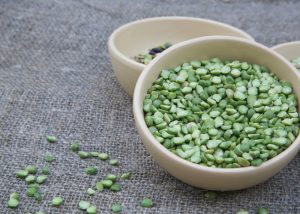
Our bodies cannot create the nine essential amino acids. Hence, we must get these from the foods we eat. Consequentially, a lack of the essential ones can cause decreased immune response, weakness, fatigue, and changes to the texture of our skin and hair.[6]
A failure to supply our bodies with the proper amount of essential amino acids is also detrimental to psychological health. For example, one study found that replenishing the body’s supply of deficient essential amino acids can greatly help mental disorders.[7] In particular, tryptophan can help with bipolar disorder, schizophrenia
How Many Different Amino Acids Are There? A List of All 20
Here’s a quick list of the nine essential and 11 non-essential amino acids your body needs.[10]
| 9 Essential Amino Acids These amino acids come from food | 11 Non-Essential Amino Acids Your body creates these amino acids naturally | |
| 1 | Isoleucine | Alanine |
| 2 | Leucine | Arginine |
| 3 | Lysine | Asparagine |
| 4 | Methionine | Aspartic Acid |
| 5 | Phenylalanine | Cysteine |
| 6 | Threonine | Glutamic Acid |
| 7 | Tryptophan | Glutamine |
| 8 | Valine | Glycine |
| 9 | Histidine | Proline |
| 10 | Serine | |
| 11 | Tyrosine |
The 9 Essential Amino Acids for Your Diet
Now, you know there are nine essential amino acids you must consume daily. So, the next step is figuring out how to get them in your diet. Thus, the list below highlights the role of each amino acid, and where you can find them.
Isoleucine
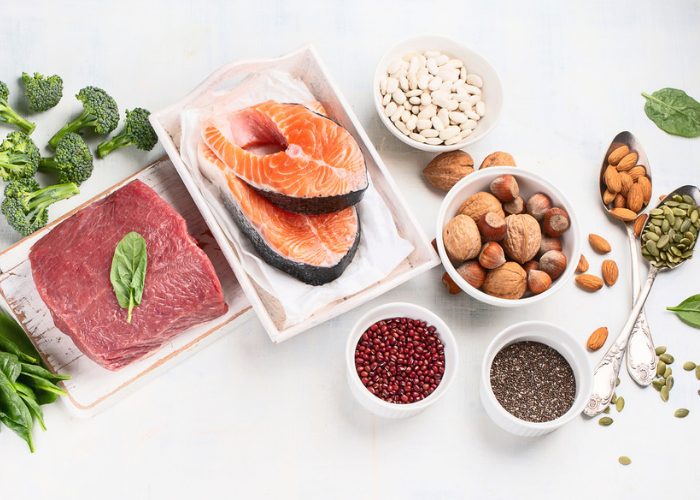
- Found in meat, fish, cheese, eggs, seeds, and nuts[11]
- Chia seeds, Brazil nuts, sunflower seeds, almonds, hemp seeds, sesame seeds, walnuts, and hazelnuts
Isoleucine regulates blood sugar for energy and to build blood cells.[12] So, it helps wound-healing, stimulates immune function, and secretes hormones.[13]
Leucine
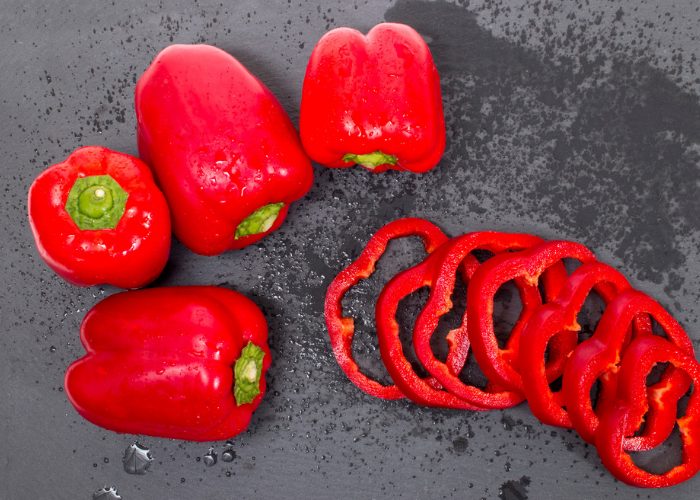
- Found in green bell peppers, green zucchini, Italian sweet red bell peppers, and red bell peppers[14]
Leucine preserves lean muscle mass from breaking down. Therefore, it is especially good for those with lower protein intake and elderly people to prevent the loss of muscle mass.[15]
Lysine
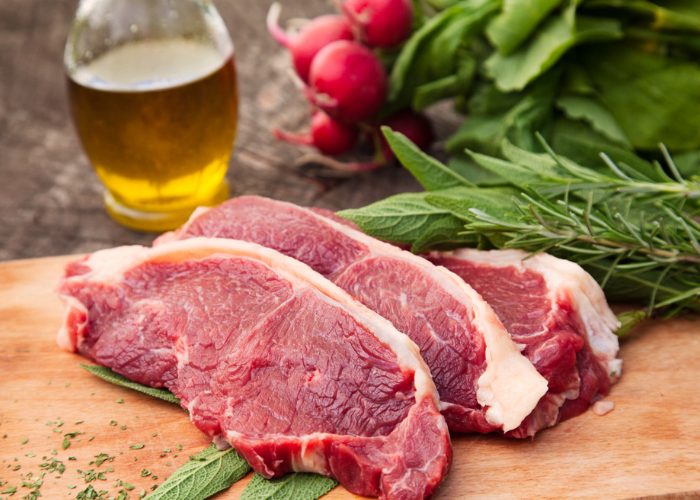
- Found in many foods, especially red meat, fish, dairy, and beans [16]
- Spirulina, soy protein, lentils, and chickpeas
Lysine is useful for growth and tissue repair and converts fatty acids into a type of fuel that lowers cholesterol.[17] Also, it helps to clear the herpes simplex virus by knocking out another amino acid, arginine (an excitable amino acid), from occupying cells.[18]
Methionine
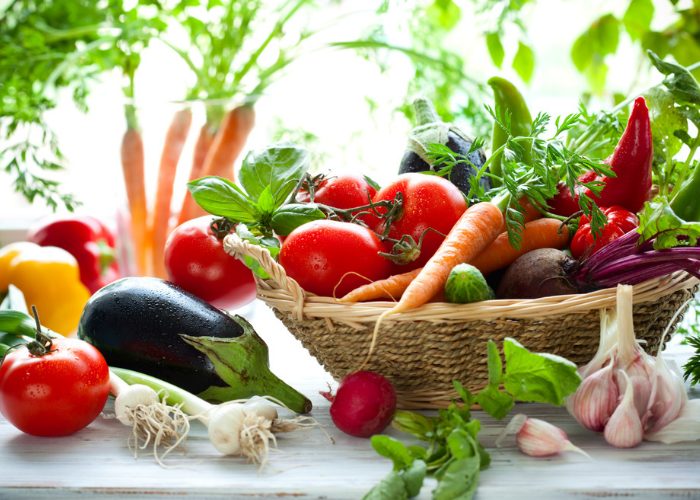
- Found in predominantly vegan diet foods: fruits, grains, veggies, nuts, and seeds[19]
- Nut
butters , whole grain rice, beans, legumes, sunflower seeds, chia seeds, wheat, and figs
Methionine helps form cartilage in the body.[20] So, it combats hair loss and brittle nails. And, methionine is the only sulfur-containing amino acid, and its absence
Phenylalanine
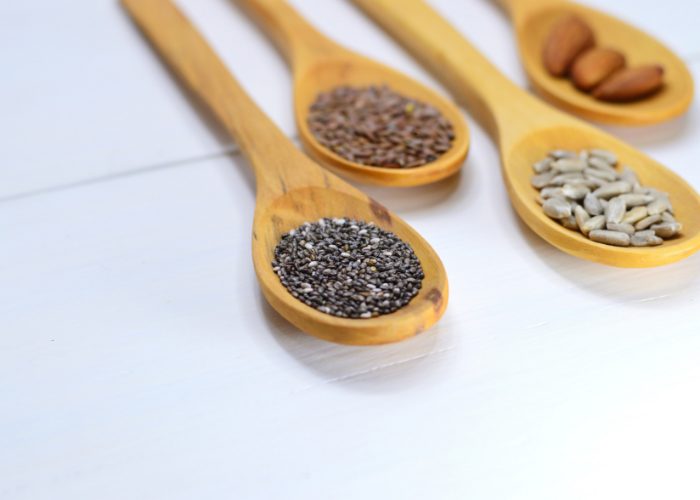
- Found in milk, eggs, meat, beans, nuts, and seeds
- Pumpkin seeds, sunflower seeds
, chi a seeds, hemp seeds, walnuts, hazelnuts, lentils, chickpeas, red beans, and kidney beans
Phenylalanine becomes the neurotransmitters epinephrine and norepinephrine.[23] In particular, norepinephrine helps build memory. And, phenylalanine also has antidepressant effects.[24]
Threonine
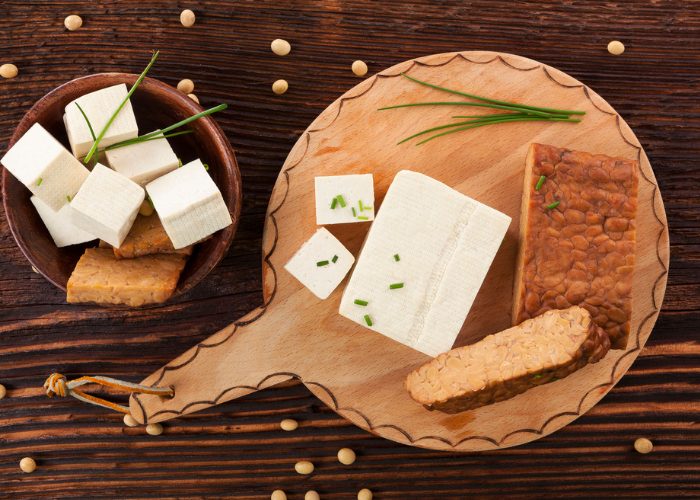
- Found in meat, cheese, beans, seeds, nuts, and soya
- Tempeh, tofu, miso, lentils, peanuts, sunflower seeds, pumpkin seeds
Threonine helps build elastin, collagen and muscle tissue.[25] Therefore, it builds strong bones and tooth
Tryptophan
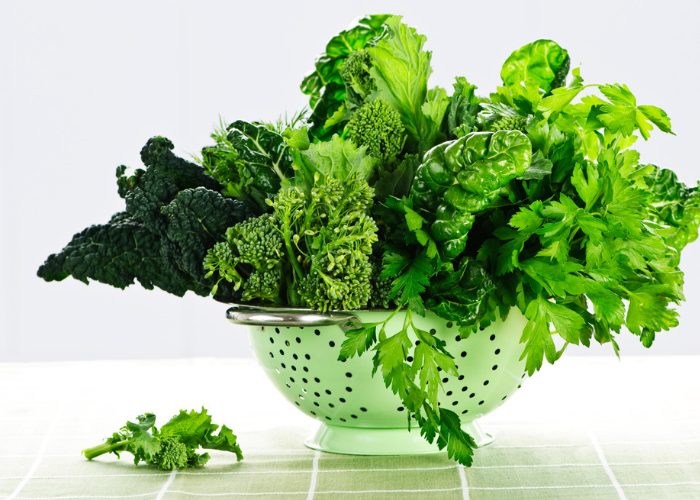
- Found in meat, turkey, milk, spinach, bananas, and dates[28]
- Leafy greens, lettuces, mushrooms, beans, quinoa, lentils, and oats
Tryptophan regulates serotonin, melatonin, and neurotransmitters.[29] Thus, as a relaxing amino acid, tryptophan protects against central fatigue.[30] And, it helps with sleep, muscle growth and repair, and brain health.
Valine
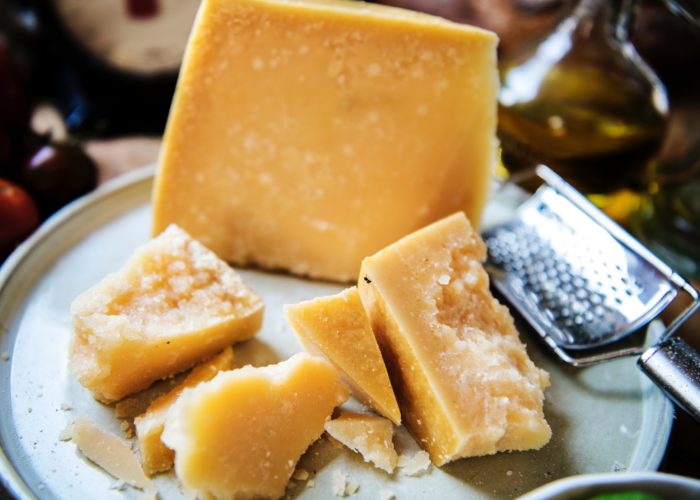
- Found in cheese, dairy, eggs, soya, meat, fish, beans, mushrooms, and whole grains
- Broccoli, peas, beans, soy, peanuts, lentils, chia seeds, and whole grains
Valine supplies the muscles with extra glucose to provide energy during physical activity.[31] Also, it aids in
Histidine
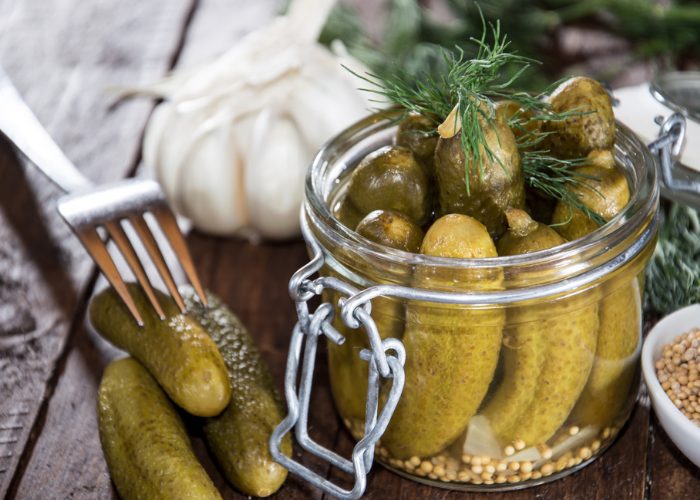
- Found in yogurt, sauerkraut, kimchi, kombucha, pickles, fermented meat, rice, wheat, rye, seaweed, beans
Histidine aids in the contraction function of smooth muscles like the lungs, uterus, and stomach.[33] Also, histidine helps detox the body, helps with immunity, and is a neurotransmitter between nerve cells.[34]
As adults, we produce histidine internally. However, infants need histidine and receive it from breastmilk.[35]
Should I Take Supplements?

Mostly, we get all the essential amino acids from the protein we eat every day. However, in some cases, supplements may be a good idea. Therefore, if you have a poor diet or suffer from any of the following digestive problems, you may need supplements to get all the nutrients you need:
- Leaky gut syndrome
- Malabsorption
- Low stomach acid
- Blood sugar imbalance
- Adrenal fatigue
However, absent a digestion problem, additional supplements of essential amino acids are used by bodybuilders or anyone who wants to build lean muscle mass.
Though, supplementation of non-essential ones are also available. But, these are usually only needed when your body is in some kind of distress. For instance, if you’re suffering from an infection, fever, or surgical trauma, taking a non-essential amino supplement can help you maintain well-being and repair your wounds.[36]
Should I Care About Conditionally Essential Amino Acids?

Conditional amino acids are normally non-essential amino acids. However, they become essential under certain conditions, like when your body is under extreme distress or you are severely ill.
Here is a comprehensive list of the conditionally essential amino acids:
- Arginine
- Cysteine
- Glutamine
- Glycine
- Proline
- Tyrosine
- Serine
- Ornithine
Conditionally essential amino acids work by giving you more of a non-essential amino acid than it produces normally. Ideally, we use extra non-essential amino acids to bring our body back into balance, and out of distress. For example, if you are post-surgery or have an
Arginine is an example of a conditionally non-essential aminoacid.[37] In particular, it helps dilate blood vessels.[38] So, arginine is useful in treating cardiovascular conditions and erectile dysfunction.[39] But, absent a specific health condition, arginine is not essential.
Another example is glutamine. It is a building block of protein in your intestines and immune system. Particularly, a glutamine supplement can help your body repair itself faster during an intense illness, after surgery, or if you have a serious injury.[40] Specifically, it restores your immune system when your body has a direct need.
So, if you have a serious health concern or are suffering from a medical trauma, talking with your healthcare professional about conditionally essential amino acids may help get your body back on track in less time and with less difficulty.
Which Foods Are High in Amino Acids?
While supplements help you obtain essential amino acids every day, whole foods are always the best way to get them. Thus, the best tip is to ensure you are getting complete proteins every day to help your body to perform its essential functions.
Recommended Daily Allowances
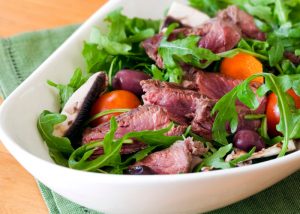
Essential amino acids do not have a recommended daily allowance (RDA). However, the Dietary Reference Intake (DRI)does offer suggestions. The DRI is a U.S. government directory that doesn’t offer suggestions for optimal health. Instead, it examines the intake values of healthy people who maintain their well-being. Thus, the DRI has assessed the following values of essential amino acids based on the diets of healthy people.
Essential amino acids are on a milligram-to-gram ratio with the proteins that you eat. For example, every gram of protein has a set number of milligrams of essential amino acids. So, this occurs automatically when you eat complete proteins.
- Histidine: 14mg per gram of protein[41]
- Isoleucine: 19mg per gram of protein[42]
- Leucine: 42mg per gram of protein[43]
- Lysine: 38mg per gram of protein[44]
- Methionine: 19mg per gram of protein[45]
- Phenylalanine: 33mg per gram of protein[46]
- Threonine: 20mg per gram of protein[47]
- Tryptophan: 5mg per gram of protein[48]
- Valine: 24mg per gram of protein[49]
Our total daily intake of the essential amino acids is 214mg for each gram of protein. As our daily protein intake for women is 46g per day,[50] that equals a total of 9,844mg (or 9.8g) of essential amino acids for 46g of protein per day.
While this sounds way too complex and confusing, it is all very simple when you eat complete proteins. Complete proteins are proteins that include all of the essential amino acids. Though, you do not have to eat them at every meal. But, it is important
Complete Protein Sources
Complete proteins are single-source foods that provide all of the amino acids. So, consuming any one of these foods will give you the necessary amino acids your body needs. You can find complete proteins in:
- Meat
- Fish
- Eggs
- Dairy
- Quinoa
- Soy
Thus, if you eat a one cup serving of quinoa, you will get 8g of protein that contains all nine essential amino acids. And, three ounces of red meat provides 29g of complete proteins. So, the trick is to make sure you are eating a sufficient amount of proteins per day and that they are complete.
Importantly, the USRDA actually recommends avoiding a diet full of red meat, eggs, cheese, and dairy. Instead, it recommends that you replace them with lean and plant-based proteins.[51] As a result, eating healthy proteins from plant-based foods instead of red or processed meat lowers the risk of several diseases and prevents premature death.[52]
How to Meet Recommended Allowances on a Plant-Based Diet
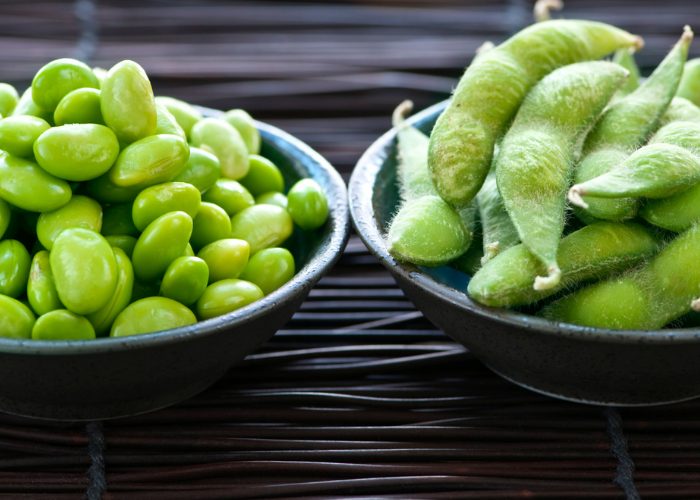
Again, most plant sources do not contain complete proteins. So how do you make sure you’re getting enough amino acids on a plant-based diet? We can combine different incomplete proteins to make complete proteins. Here’s a step-by-step guide how to do it:
- Pick your base food ingredient.
- Look at which plant food group it belongs to.
- Take note of the missing amino acids for that food group.
- Combine it with another food group that contains the missing amino acid. Choose ingredients from the second food group and add them to your base food ingredient.
Use the plant-based protein combination cheat sheet below to do this quickly and easily![53]
| Plant Foods | Plant Food Group | Missing Amino Acids | Combine with |
| Black beans, garbanzo beans, kidney beans, chickpeas, lentil | Legumes | Methionine | Grains, nuts, or seeds |
| Brown rice, barley, millet, buckwheat, oatmeal | Grains | Lysine, threonine | Legumes |
| Peanuts, sesame seeds, almonds, hazelnuts, walnuts | Nuts and seeds | Lysine | Legumes |
| Broccoli, spinach, tomatoes, squash, lettuce, kale | Vegetables | Methionine | Grains, nuts, or seeds |
| Butternut squash, sweet potatoes, white potatoes | Starches | Lysine, threonine | Legumes, nuts, or seeds |
Plant-based combination meal ideas
So, combining plant-based foods to get all nine essential amino acids
- Vegetarian chili: Make a huge pot of chili with kidney beans and tomatoes and serve it with brown rice.
- Barley salad: Try a healthy barley salad with green lentils, red peppers, and cilantro.
- Nutty Buddha Bowl: Layer your bowl with leafy greens. Fill it with roasted chickpeas and brown rice and top it off with toasted peanuts and sesame seeds.
- Humble Hummus: Make a chickpea hummus topped with toasted almonds.
- Simple Stir-Fry: Have your vegetable stir-fry, add cashews and serve with a side of brown rice.
- PB & J: A peanut butter and jelly sandwich on whole grain wheat bread
combines legumes and grains to make a satisfying complete protein meal or snack! - Roasted Roots: Bake butternut squash with walnuts and rosemary and serve it with quinoa.
There are so many delicious and easy plant-based recipe ideas to try, so you’ll never have trouble getting all of the essential amino acids in your diet – even if you don’t eat meat!
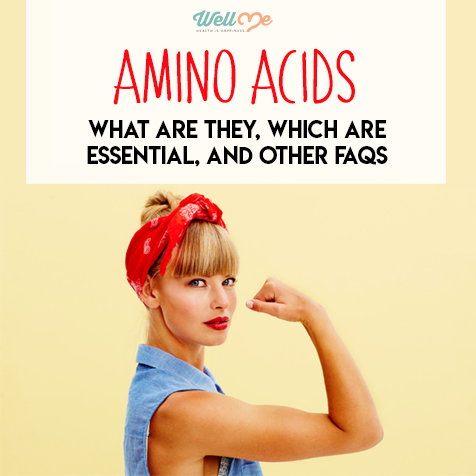
Conclusion
So long as you get healthy proteins in your diet every day, you can balance out your amino acids automatically! This can help you stay healthy and strong for years to come, and in good taste. If you’re struggling to get adequate amounts, just be sure to re-read our article above as it details exactly what you can do.
References
- [1] https://www.aminoacid-studies.com/amino-acids/what-types-of-amino-acids-are-there.html
- [2] https://www.aminoacid-studies.com/amino-acids/what-types-of-amino-acids-are-there.html
- [3] Amino Acid Studies. https://www.aminoacid-studies.com/amino-acids/what-types-of-amino-acids-are-there.html
- [4] https://www.aminoacid-studies.com/amino-acids/what-types-of-amino-acids-are-there.html
- [5] https://www.aminoacid-studies.com/amino-acids/what-types-of-amino-acids-are-there.html
- [6] Amino Acid Studies. https://www.aminoacid-studies.com/amino-acids/
- [7] https://www.ncbi.nlm.nih.gov/pmc/articles/PMC2248201/
- [8] https://www.psychologytoday.com/intl/blog/integrative-mental-health-care/201806/using-amino-acids-and-omega-3s-treat-bipolar-disorder
- [9] SF Gate. https://healthyeating.sfgate.com/happens-dont-enough-essential-amino-acids-6515.html
- [10] https://www.medicinenet.com/script/main/art.asp?articlekey=22839
- [11] https://pubchem.ncbi.nlm.nih.gov/compound/l-isoleucine#section=Top
- [12] NIH. https://pubchem.ncbi.nlm.nih.gov/compound/l-isoleucine#section=Top
- [13] https://pubchem.ncbi.nlm.nih.gov/compound/l-isoleucine#section=Top
- [14] NIH. https://pubchem.ncbi.nlm.nih.gov/compound/DL-Leucine#section=Top
- [15] https://examine.com/supplements/leucine/
- [16] https://pubchem.ncbi.nlm.nih.gov/compound/5962#section=Top
- [17] NIH. https://pubchem.ncbi.nlm.nih.gov/compound/5962#section=Top
- [19] https://nutritionfacts.org/2014/07/08/a-low-methionine-diet-may-help-starve-cancer-cells/
- [20] https://www.aminoacid-studies.com/amino-acids/methionine.html
- [21] Ammino Acid Studies. https://www.aminoacid-studies.com/amino-acids/methionine.html
- [22] https://nutritionfacts.org/2014/07/08/a-low-methionine-diet-may-help-starve-cancer-cells/
- [23] https://www.sciencedirect.com/topics/biochemistry-genetics-and-molecular-biology/phenylalanine
- [24] Science Direct. https://www.sciencedirect.com/topics/biochemistry-genetics-and-molecular-biology/phenylalanine
- [25] http://www.aminoacidsguide.com/Thr.html
- [26] http://www.aminoacidsguide.com/Thr.html
- [27] Amino Acids Guide. http://www.aminoacidsguide.com/Thr.html
- [28] https://universityhealthnews.com/daily/nutrition/tryptophan-foods-tryptophan-supplements/
- [29] http://www.aminoacidsguide.com/Trp.html
- [30] Amino Acids Guide. http://www.aminoacidsguide.com/Trp.html
- [31] http://www.aminoacidsguide.com/Val.html
- [32] http://www.aminoacidsguide.com/Val.html
- [33] Britannica. https://www.britannica.com/science/histamine
- [34] https://www.britannica.com/science/histamine
- [35] https://www.aminoacid-studies.com/amino-acids/what-types-of-amino-acids-are-there.html
- [36] NCBI. https://www.ncbi.nlm.nih.gov/books/NBK234922/
- [37] https://www.aminoacid-studies.com/amino-acids/what-types-of-amino-acids-are-there.html
- [38] https://www.mayoclinic.org/drugs-supplements-l-arginine/art-20364681
- [39] Mayo Clinic. https://www.mayoclinic.org/drugs-supplements-l-arginine/art-20364681
- [40] https://www.ncbi.nlm.nih.gov/pubmed/19608826
- [41] https://www.nap.edu/read/10490/chapter/12
- [42] The National Academies Press. https://www.nap.edu/read/10490/chapter/12
- [43] https://www.nap.edu/read/10490/chapter/12
- [44] https://www.nap.edu/read/10490/chapter/12
- [45] The National Academies Press. https://www.nap.edu/read/10490/chapter/12
- [46] https://www.nap.edu/read/10490/chapter/12
- [47] https://www.nap.edu/read/10490/chapter/12
- [48] The National Academies Press. https://www.nap.edu/read/10490/chapter/12
- [49] https://www.nap.edu/read/10490/chapter/12
- [50] https://www.sciencealert.com/the-usda-just-released-a-massive-new-report-on-what-s-actually-healthy
- [51] Science Alert. https://www.sciencealert.com/the-usda-just-released-a-massive-new-report-on-what-s-actually-healthy
- [52] https://www.hsph.harvard.edu/nutritionsource/what-should-you-eat/protein/
- [53] https://nutrition.org/protein-complementation/


